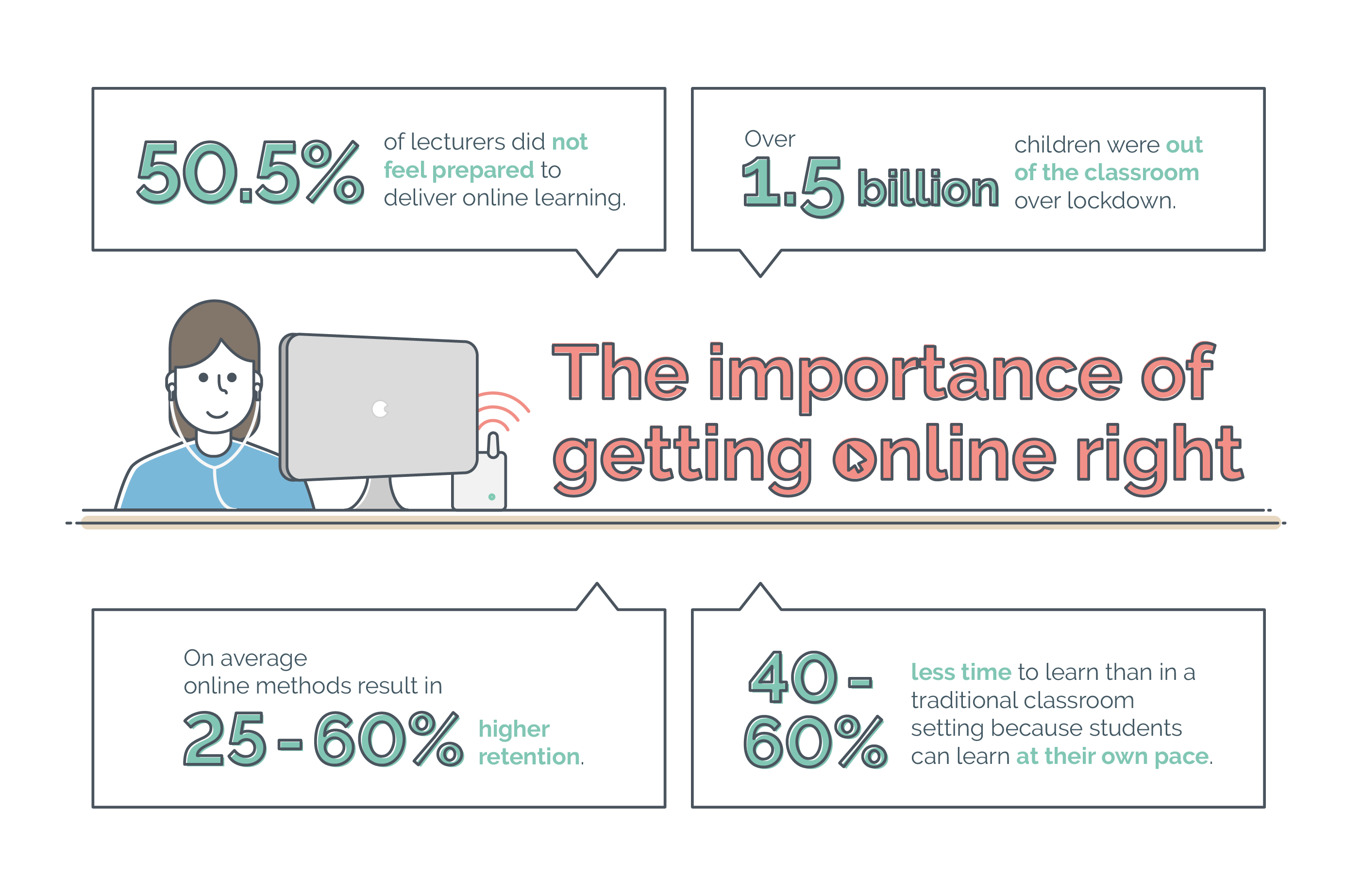The university experience hangs in the balance with students paying more than ever before to continue their higher education, during a time where they may not even be able to move to the city where their university is based. What effect does it have on the university-student relationship to have such formative years move entirely online? For starters, the pressure is on for educators to provide value and sustain student interest and engagement levels, and to tackle somewhat unexpected challenges.
Sarah, a lecturer from Newcastle University, says: “the key thing we noticed when we switched to online teaching at the start of lockdown was the lack of engagement online with students, this was surprising considering how they’re typically so comfortable online and on their phones.” She and her colleagues found students reluctant to partake in dialogue and discussions, with few willing to even use instant messaging or chat functions, even more hesitant to turn on their cameras in seminars and tutorials. Overall, during lockdown, they discovered the students were generally uncomfortable fully engaging in sessions. While she originally figured she would be battling IT issues and stuck on imaginative content creation, Sarah has found herself spending more time thinking of how to simply inspire debate and conversation while addressing these new needs, behaviours and confidence levels.
It strikes a noticeable and perhaps surprising difference between the webinar-mania from the professional world over the last year, compared to the awkwardness of students using the same platforms for learning when technology is arguably their strength.
In her online classes at the end of the 2019/20 academic year, Sarah tested and found success in readjusting the session format into panel discussions where students could listen in and observe academics and specialists break down and analyse key topics. It’s helped take the pressure off students and prioritised absorbing and understanding the course, over the focus on whether someone has turned their camera on or not. Nevertheless, it still leaves the teams facilitating learning and nurturing students concerned about how to ensure engagement with online content for this coming academic year. Universities have a vital role in fostering curiosity, innovation, and creativity. If students are switching off, we need to understand why. Here is where matching the flexibility and accessibility of technology with a deeper understanding of audiences and their motivations can really help boost the connection in learning.
Gen Z audiences, for example, are known to expect instant communication and feedback. From friends and parents but also educators too. Is current heightened connectivity also providing increased feedback and understanding of their performance and progress? When Stanford University ran an informal survey on how students felt sharing video during lectures, two-thirds of respondents reported they have been in a situation where they felt uncomfortable having their camera on in class. When asked why, respondents said they were self-conscious about being seen in class, weren’t in private spaces and/or didn’t want to show their current living situations. Lockdown arguably blurred lines between professional, school, and home life for everyone, and we mustn’t forget that university students’ living situations are often going to reflect where they are emotionally, financially, and personally. So how can we balance professors needing to know their students are ‘present’ and students needing to feel comfortable or like their space hasn’t been invaded?
Maybe the answers lie in reinventing the environment instead of replicating the traditional. A new learning environment should mean a new look into innovative approaches to spark interest, participation, curiosity and commitment. It can sound scary and resource intensive at first, but it can be something as simple as integration of Twitter threads for bursts of insightful information in a way that relates to the audience to help tap into the concept of microlearning. Particularly vital during a time where distractions are constant and attention spans are significantly shorter, the expectation to learn primarily from reading long blocks of information may soon be a thing of the past. Or, it could be something more captivating to make the learning experience more meaningful for students. Inclusion of game like elements such as immediate feedback, visualised progress and staggered learning across levels (i.e. have you understood X before moving onto Y?), are ways to enhance the online learning experiences. Various studies [Tan and Singh (2017) and Glowacki, Kriukova and Avshenyuk (2018)] have been carried out over the years in the field of gamification in higher education by using gamified tools such as Kahoot, with many specifying its effectiveness for learning transfer, boosted motivation and overall engagement.
Adding gamification or game elements is a great example of how taking advantage of technology can help to boost more meaningful learning in a way that’s fun and novel, yet also insightful and informative for students. Boundaries can be pushed further with other innovative approaches, utilising artificial intelligence aided virtual assistants or virtual, immersive environments. All of these approaches represent a look into how the near future of learning in higher education is developing, particularly as younger generations are in constant search of and desire for new and exciting experiences.


